HALLE, GERMANY - This charming 1,200-year-old city, whose skyline is dominated by five ancient towers, truly is the “salt of the Earth.” Not just because its residents are kind and welcoming to strangers like me, but because Halle is actually recognized as the salt capital of Europe.
Thanks to a crack in the earth that runs along the bottom of the River Saale - it snakes through Halle - salt deposits have been floating to the surface here for centuries. Referred to as “white gold” by the locals, the salt has been harvested and then turned into blocks by workers called “salters” - they wore unique uniforms adorned in 18 silver buttons - before being sold.
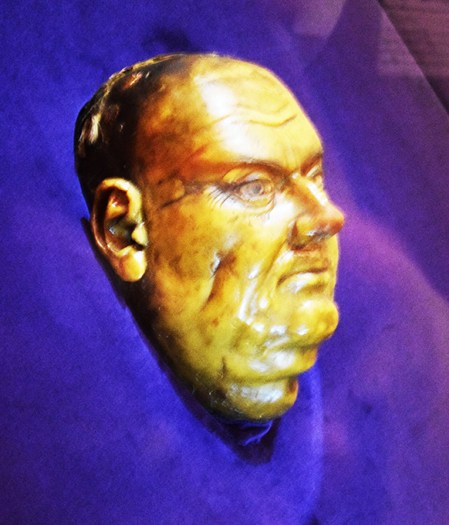
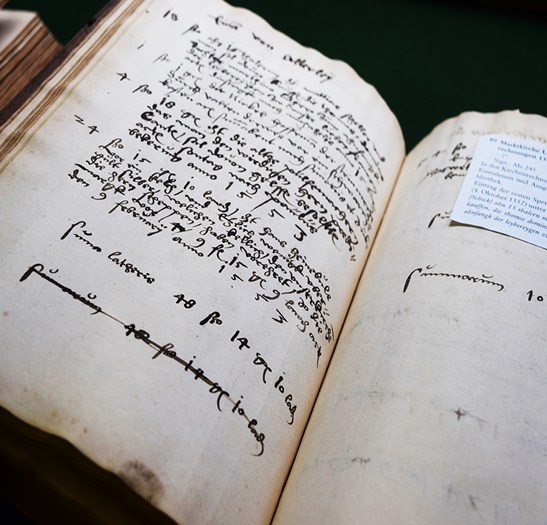
Left: Martin Luther's death mask. Right: Luther signed this bible.
One of those “salters”, who’s now a member of a brotherhood that honours the traditions of the craft, shares his city’s history with me at the landmark Krug zum Grünen Kranze beer garden, one of Germany’s oldest restaurants. He tells me the “white gold made Halle one of the richest cities in my country.”
Looking out over the river from the restaurant’s waterside terrace, I see remnants of Halle’s past glory - Giebichenstein Castle, a holdover from the city’s Roman Road period, sits perched on the hill opposite the restaurant and other regal buildings line the all-important Saale, a tributary to the mighty Elbe River.
“Would you like to eat one of my buttons?” he asks.
While salt may have put Halle on the map, chocolate is one of the main industries here today and the Halloren Chocolate Factory, the oldest company of its kind in Germany, makes delicious replicas of the salter’s buttons and wraps them in silver paper. Talk about unbuttoning a sweet surprise.
The entertaining “salter” suggests the best place to start my tour of Halle would be the Stadtgottesacker, a Renaissance cemetery rated one of the top three in Germany where some of the city’s most famous residents have been laid to rest.
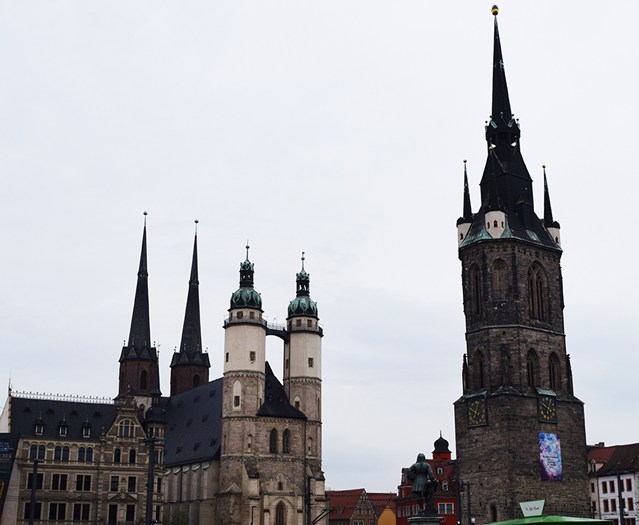
Above: Halle is known as the city of towers.
Next morning, under a gloomy sky, I walk the moss-covered grounds of the Italian Camposanto-style cemetery, featuring lovely arches that protect the tombs of some revered German families. I stop at one when I recognize the name “Handel” - members of legendary composer George Frideric Handel’s family, including his father, are buried here. While the great composer was born in Halle, he died in London and because he was held in such high esteem by British royalty, he was buried in Westminster Abbey alongside kings and queens. However, the man who composed the Messiah is still this city’s favourite sons - a bronze statue of Handel looking out towards England stands in Halle’s main Market Square.
While walking through the labyrinth of narrow streets leading to Market Square, I pass the last remaining clock tower from Halle’s 15th century town wall, which still tells time.
I’m also struck by the number of young people I encounter - Halle is also home to Martin Luther University of Halle-Wittenberg, named after the Protestant Reformer who visited here three times in the 16th century to try and convince Germans they should cut ties with the Roman Catholic church.
Luther’s death mask and impressions of his hands are now displayed in a small museum in Marienkirche (St. Mary's Church), the lovely Gothic-style church whose four massive towers make it look like a crown sitting in the middle of the square.
Market Square is where farmers have been coming for centuries to supply food to the masses and remains the central meeting point in the city.

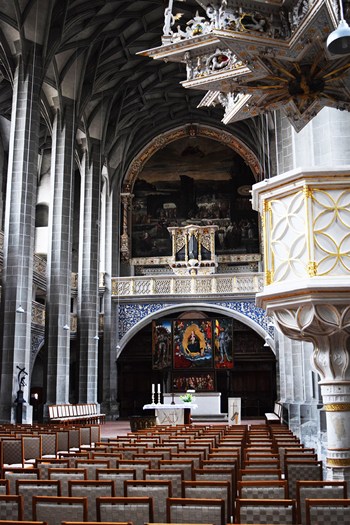
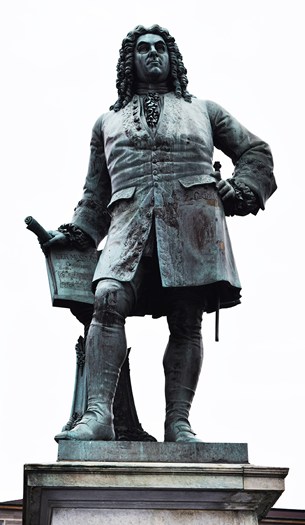
Left: Original city wall. Centre: Bach played here. Right: Handel was born here.
The four giant towers connected to St. Mary’s, combined with another square landmark, the Roter Turm (Red Tower), is why Halle is nicknamed “City of Five Towers.”
St. Mary’s, also known as Market Church, is one of the most important buildings in Saxony-Anhalt, the state in which Halle resides and which boasts the greatest collection of UNESCO World Heritage Sites in all of Germany.
Built between 1529 and 1554, the Gothic-style St. Mary’s is where Handel was baptized and learned to play the organ - that organ now sits above the main alter like a monument. During the city’s annual Handel Festival (held in June each year) the church, because of its amazing acoustics, hosts concerts. Another legendary German composer, Johann Sebastian Bach, also played music in St. Mary’s and his son Wilhelm served as the church’s organist.
The square’s striking Red Tower was built between 1418 and 1506 to serve as a symbol of the city’s wealth and its 84-metre- high clock tower was once the tallest building in medieval Germany. The tower has been featured in many famous paintings and a small museum at its base displays important musical instruments, some reportedly played by Handel when he was a child.
As important as St. Mary’s and the Red Tower are, though, the most fascinating building in Halle, in my opinion, is the Marienbibliothek, the Protestant church library located next to St. Mary’s where 36,000 priceless books from the 14th to 18th centuries are stored.
The Marienbibliothek is unlike any library I’ve ever visited - no study rooms or rich wood panelling here.
“I’m glad you are here at this time of year (spring 2016) because there’s no heat or air conditioning in this building,” the enchanting librarian tells me. “It can get stifling hot in here during summer months and in winter it’s colder in here than outside.”
The books are spread out over three floors in the cramped library, which looks more like a storeroom - of history in this case.
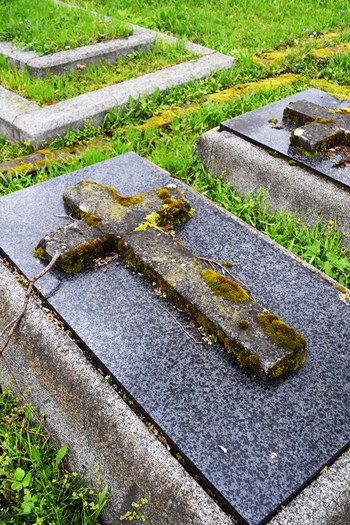
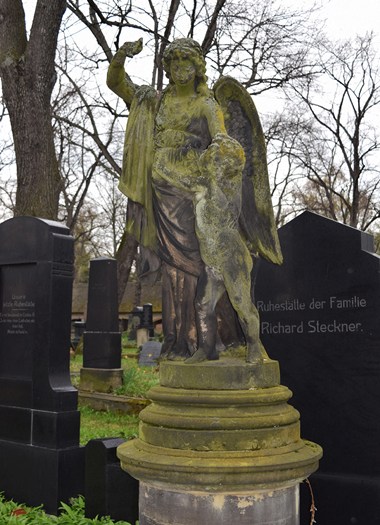
Above: Moss-covered monuments in the Old Town cemetery.
The mature librarian ushers me over to a small glass case where a bible from 1534 and a small single shoe are displayed.
“The written note in the bible is from Martin Luther’s own hand,” says the excited woman. “It’s a dedication he wrote to the person who owned the bible.
“The shoe belonged to Philip Melanchthon (he was Luther’s closest collaborator in the Protestant Reformation),” she tells me.
Halle, thanks to its rich history, is home to a number of important museums - the Saline Museum, Handel Museum located in the house where the composer was born, and the State Museum of Prehistory are all worth a look - as well as some lovely theatres and churches.
The city is also one of Germany’s greenest - more than 7,000 hectares have been set aside for parks and green spaces.
Halle can’t be taken with a grain of salt because it’s really worth one’s salt to visit.
Information
The best way to get to Halle from Canada is with Lufthansa via Frankfurt or Berlin. Air Canada also offers daily service to Frankfurt. / For tourist information on Germany, go to
www.germany.travel